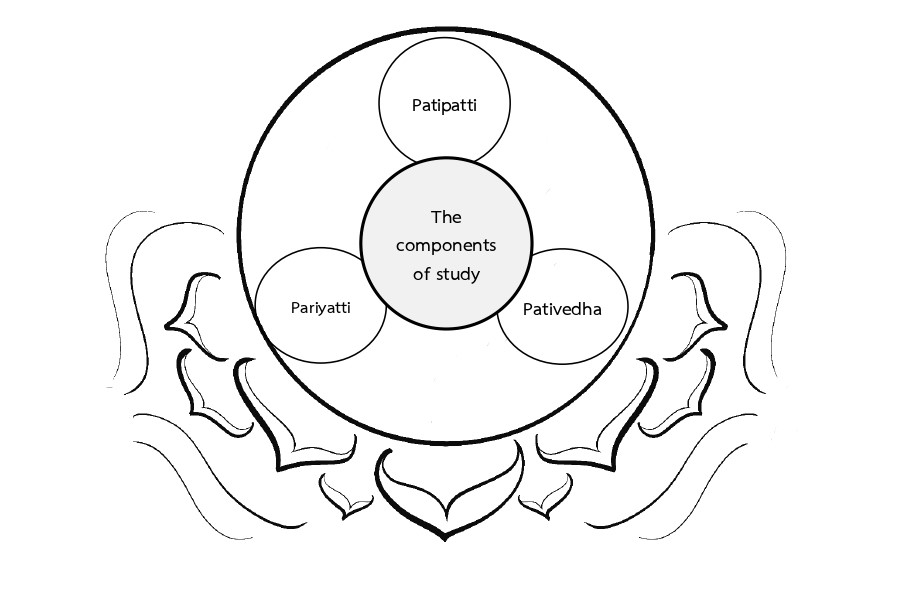BUDDHIST METHODS OF EDUCATIONAL APPROACH
Keywords:
Buddhist, Methods of Educational Approach, Buddhist ViewpointAbstract
Background and Objective: Education is a human endeavor which should lead us to a world based on freedom and justice; where freedom means a minimum of constraints by others and justice means distribution of wealth, power and other values consistent with this kind of freedom. It should act as a major instrument in the development of a just world. "The basic objective of education must be an understanding of the world we live in the world we hope for, understanding which can lead to effective action." The objective of this research is to understand the concepts of Buddhist educational approach from Buddhist viewpoint.
Methodology: This documentary research was conducted by investigating and collecting data from the Pāli Canon and commentaries, books, documents, articles, and research reports. All the data were then analyzed to present the results of the research.
Main Results: The study indicated that the Buddha's style of teaching was generally one of skillful adaptation to the mood and concerns of his hearers' responding to the questions and even the non-verbalized thoughts of his audience and taking cues from events. By means of a dialogue with his questions, he gradually moved them towards sharing his own vision of truth. When Brahmins asked him about how to attain union with the god Brahma after death, he did not say that this was impossible, but it could have been attained by meditative development of deep loving kindness and compassion, rather than by bloody Vedic sacrifices. He often gave old terms new meanings, "For example calling the Arahat the "True Brahmin", and using the term Ariya, equivalent to the Sanskrit term for the "Noble" Aryan people, in the sense of spiritually noble, or holy."
Involvement to Buddhadhamma: This research is based on applied Buddhism in the issue of Buddhism and the development of wisdom and morality. Because, it is a study to understand the context of the Buddha's teaching and what type of teaching methods he used. To be able to make the general public understand his principles, for example, he used psychology to adapt with the people, he can teach, starting with teaching simple things such as, meditation and mindfulness in order to create peace to be ready for listening without worrying, which make it easier to understand into the listening and teachings from him.
Conclusions: The research indicated that the Buddha emphasized that his teachings had a practical purpose, and should not be blindly clung to. He likened the Dhamma to a raft made by a man seeking to cross from the dangerous hither shore of a river, representing the conditioned world, to the peaceful further shore, representing Nibbana. He then rhetorically asked whether such a man, on reaching the other shore, should lift up the raft and carry it around with him there. He therefore said, "Dhamma is for crossing over, not for retaining." A follower should not have grasped at Buddhist ideas and practices, but used them for their intended purpose, and then let go of them when they had fully accomplished their goal. Many ordinary Buddhists though, did have a strong attachment to Buddhism.
References
Boonpoo, S. (2009). The development of Thai Buddhist monastic education. [Unpublished dissertation]. Mahachulalongkornrajavidyalaya University.
Carpenter, J. E. & Rhys Davids, T. W. (2020). Digha Nikaya Vol. I (corrected repr. 2020). The Pali Text Society.
Changkwanyuen, P. (2012). Pariyatti, Patipatti, Pativedha: One process Three components of studying Buddha's knowledge. Journal of Buddhist Studies Chulalongkorn University, 19(1), 3-7.
Morris, R. (1999). Anguttara Nikaya (Vol. I). The Pali Text Society.
Pali Text Society London. (2018). The Book of the Discipline (Vinaya-Pitaka), (Vol. 3). Forgotten Books.
Panapram, D. (2023). Education for life development Buddhism Approach. Journal of Philosophical Vision, 28(1), 159-169.
Phra Phalat Sudthisak Sampannamedhi & Namseethan, S. (2022). Buddhist methods of learning management to develop learners according to the Tri-sikkha style. Journal of MCU Ubon Review, 7(3), 578-587.
Phra Sakda Chandako & Boonpoo, S. (2015). The Process of Learner Development According to the Concept of Buddhism in Thai Society. Journal of Education Naresuan University, 17(3), 144-153.
Phra Sounthone Vonelayvanh. (2023). Research Synthesis on Learning and Teaching Methods According to Buddhism Affecting 21st Century Essential Skills Using Meta-Analysis. Legal State Journal, 1(2). 38-45.
Trenckner, V. (1993). Majjhima Nikaya (Vol. I). The Pali Text Society.

Downloads
Published
How to Cite
Issue
Section
License
Copyright (c) 2023 Journal of Buddhist Anthropology

This work is licensed under a Creative Commons Attribution-NonCommercial-NoDerivatives 4.0 International License.







